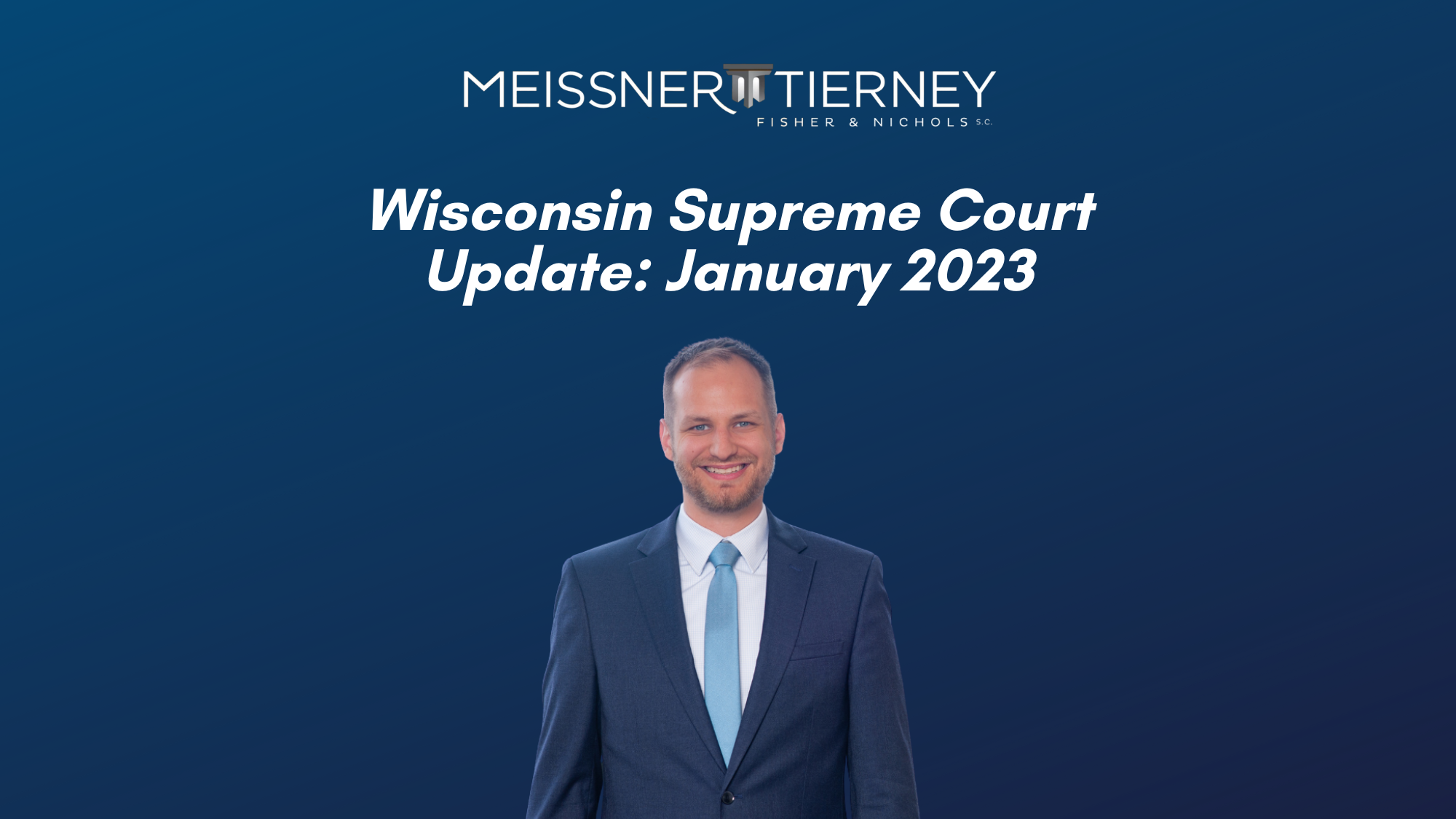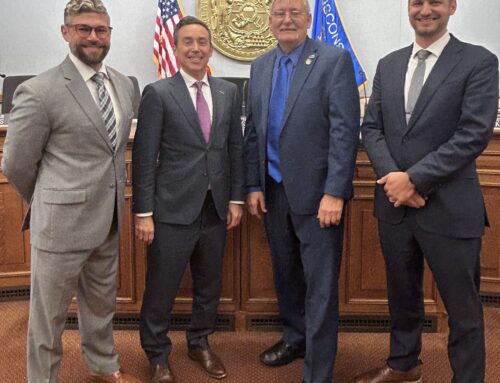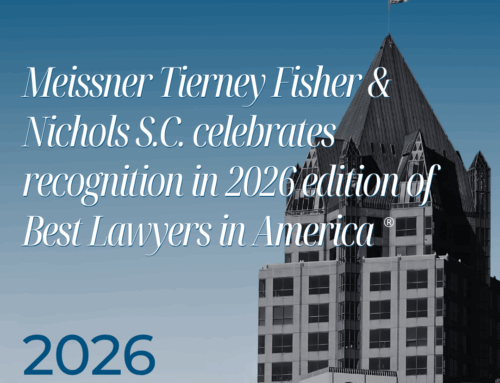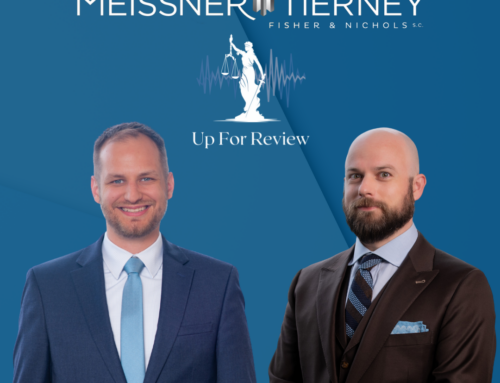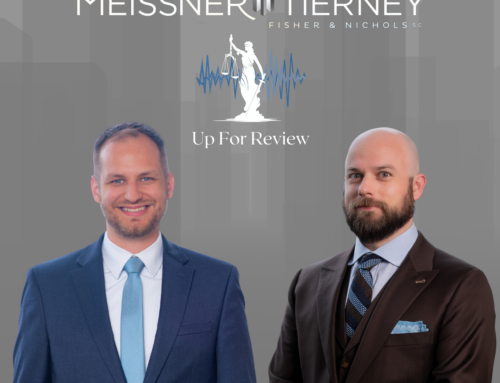There’s only one date on the Wisconsin Supreme Court’s January oral argument calendar, but it packs a pair of interesting civil cases. Before previewing those cases, this update begins with a look at the court’s first significant products liability decision in over a decade.
Cases Decided
Murphy v. Columbus McKinnon Corp., No. 2020AP1124
Products Liability
Decision Filed: December 28, 2022
Public Citation: 2022 WI 109
For the first time since the legislature codified products liability claims in 2011, the supreme court weighed in on Wisconsin’s products liability statute, Wis. Stat. § 895.047. Utility line technician Matthew Murphy was injured when a utility pole fell on him while lifting it with a set of metal tongs. Murphy sued the manufacturer of the tongs, alleging a design defect, and the circuit court granted the manufacturer’s motion for summary judgment. The court of appeals reversed, and here, the supreme court affirmed the court of appeals’ decision, even as it discarded some of its reasoning.
The majority opinion by Justice Roggensack, and joined in significant part by Justices Ann Walsh Bradley, Dallet, and Karofsky, addresses two issues regarding § 895.047’s meaning. First, the court held that the element stated in paragraph (1)(a), requiring that the plaintiff identify a safer, alternative design, does not incorporate the “risk-utility” test discussed in a comment to the Restatement (Third) of Torts section from which the statutory language was drawn. Significantly though, six justices indicated via separate writings that the factors identified in the Restatement’s comment may persuasively inform the statute’s application. Second, the court concluded that the element stated in paragraph (1)(b), requiring that the product be “unreasonably dangerous,” incorporates the common law “consumer-contemplation” standard, which turns on whether an ordinary consumer would appreciate the risks posed by the product.
Ultimately, the court concluded Murphy presented sufficient evidence—primarily through expert testimony—to survive summary judgment. Justice Karofsky authored a concurring opinion, joined by Justices Ann Walsh Bradley and Dallet, to clarify the relationship between § 895.047 and common law products liability. Justice Hagedorn, meanwhile, authored a partial dissent, joined by Chief Justice Ziegler and Justice Rebecca Grassl Bradley, arguing that the tongs were not, as a matter of law, unreasonably dangerous because a utility line specialist would have appreciated the risk associated with using the tongs to lift a utility pole.
Up for Review
Rennick v. Teleflex Medical Inc., No. 2020AP1454
Products Liability
Oral Argument: January 17
Keeping with the products liability theme, the first case set for oral argument in January involves a medical manufacturer’s duty to warn. Generally, the duty to warn inquiry in a strict products liability claim turns on whether the manufacturer properly warned the consumer of the risks associated with a product. In most jurisdictions, the “learned intermediary doctrine” allows manufacturers of medical devices to satisfy their duty to warn by informing the responsible physician of the risks associated with a device. In this case, the parties don’t meaningfully disagree that the court should adopt the learned intermediary doctrine in Wisconsin. Rather, their disagreement is whether the doctrine applies when the manufacturer fails to adequately warn either the patient or the physician. The patient argues that in the absence of any adequate warning, the causation analysis turns on whether the patient would have behaved differently if given the warning. The manufacturer, meanwhile, contends that the causation analysis focuses on whether the physician would have declined to use the device if given adequate warnings. The court of appeals took the patient’s view and held that the circuit court improperly granted the manufacturer’s motion for summary judgment. Besides that issue, the court will review whether the manufacturer is entitled to summary judgment on the patient’s claims for negligence; strict liability misrepresentation; and untrue, deceptive, or misleading advertising.
Gahl v. Aurora Health Care, Inc., No. 2021AP1787-FT
Healthcare
Oral Argument: January 17
Back in October 2021, Allen Gahl, acting as power of attorney for a Covid-19 patient, petitioned the circuit court for an order compelling Aurora Health Care to administer ivermectin to the patient. The circuit court issued a temporary order directing that ivermectin be given to the patient, and the court of appeals promptly granted Aurora’s motion for relief from the order. In the fuller decision that followed, the court of appeals held that the circuit court erroneously issued the temporary order because Gahl lacked any likelihood of success on any of the legal claims asserted in his petition. Judge Grogan dissented, arguing that the majority’s analysis of the merits of Gahl’s petition was premature given the preliminary stage of litigation.
New to the Docket
Wisconsin Property Taxpayers, Inc. v. Town of Buchanan, No. 2022AP1233
Taxation
Joint Petition to Bypass Granted: December 15, 2022
The court will consider the permissibility of “transportation utility fees,” a type of tax collected by municipalities above and beyond their general property tax levy limits. An intriguing procedural feature of this case is that the parties jointly petitioned the supreme court to bypass the court of appeals. There are only a couple other instances where parties’ have filed a joint petition to bypass. The most recent I’m aware of was in the 2015 case, New Richmond News v. City of New Richmond, 2014AP1938, and there the court ultimately vacated its order granting bypass because it was equally divided on the merits.
Miller v. Zoning Board of Appeals of the Village of Lyndon Station, No. 2021AP1764
Zoning
Petition for Review Granted: December 22, 2022
The court granted review of a due process challenge to a rezoning decision. The plaintiff alleges constitutional defects flowing from an alleged bias on the part of a member of the local planning commission and village board.

